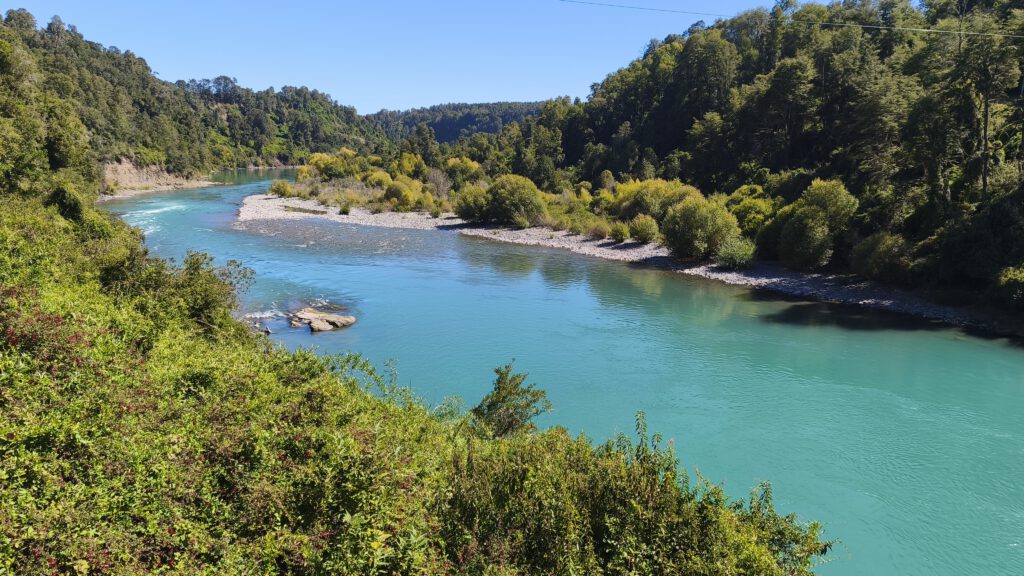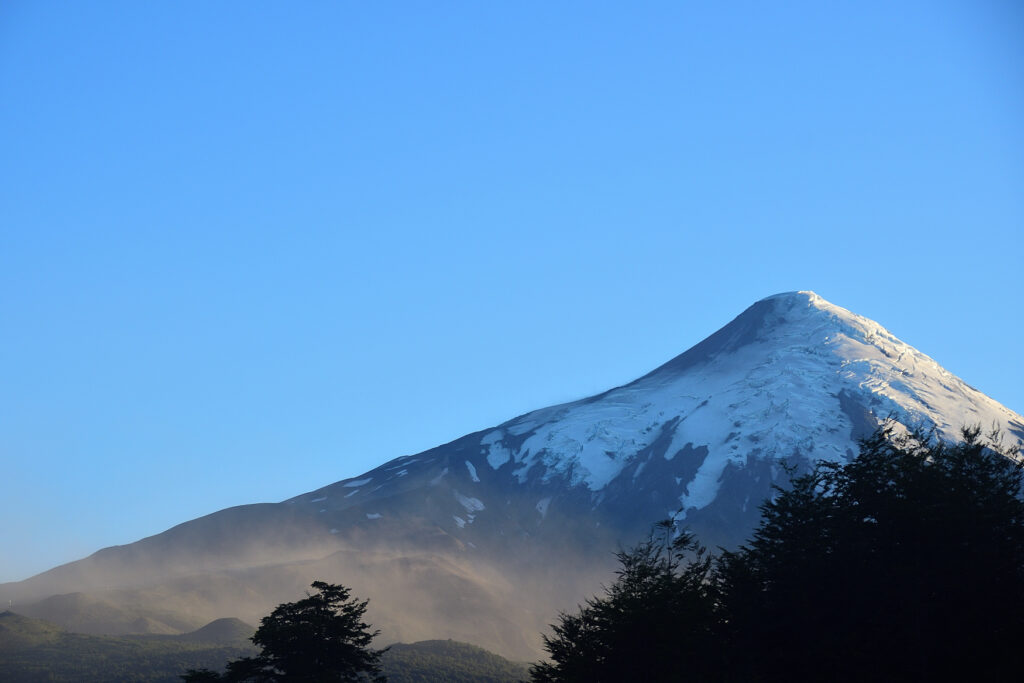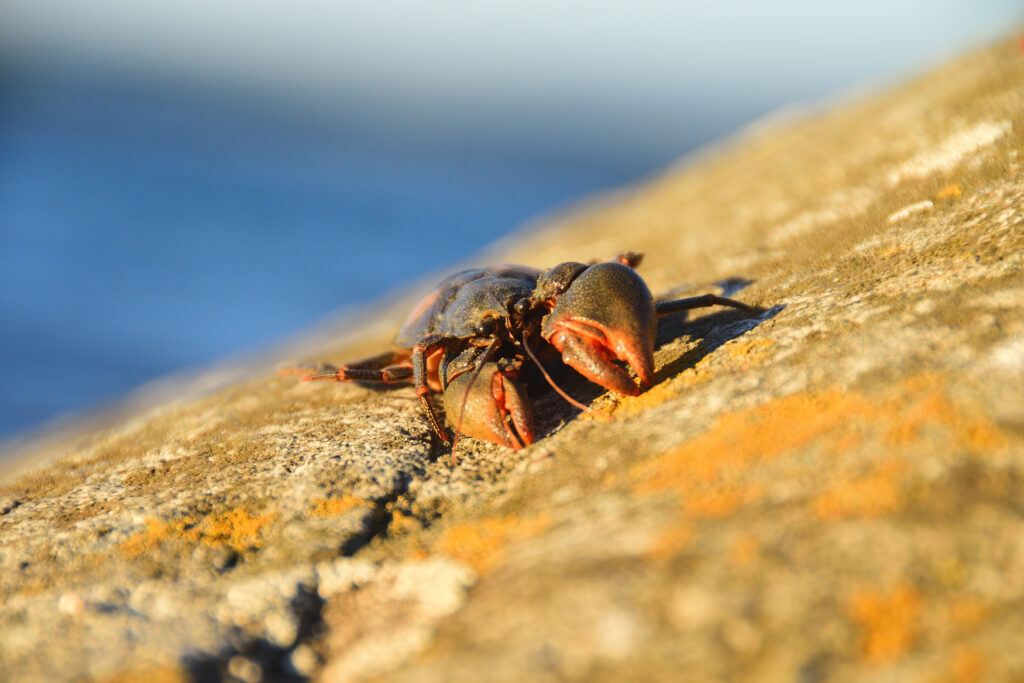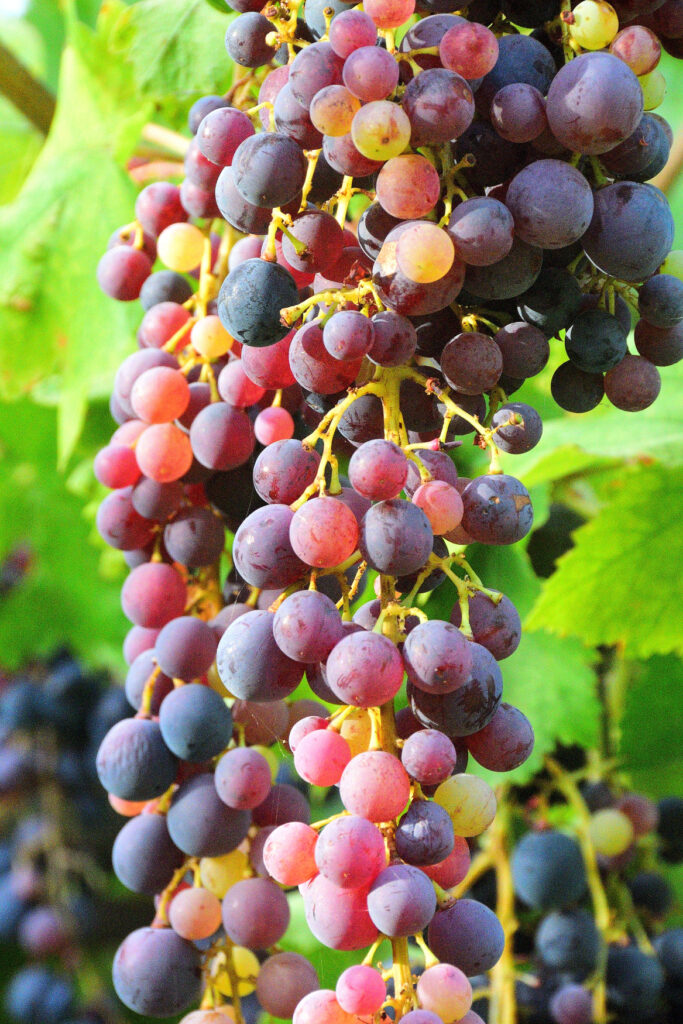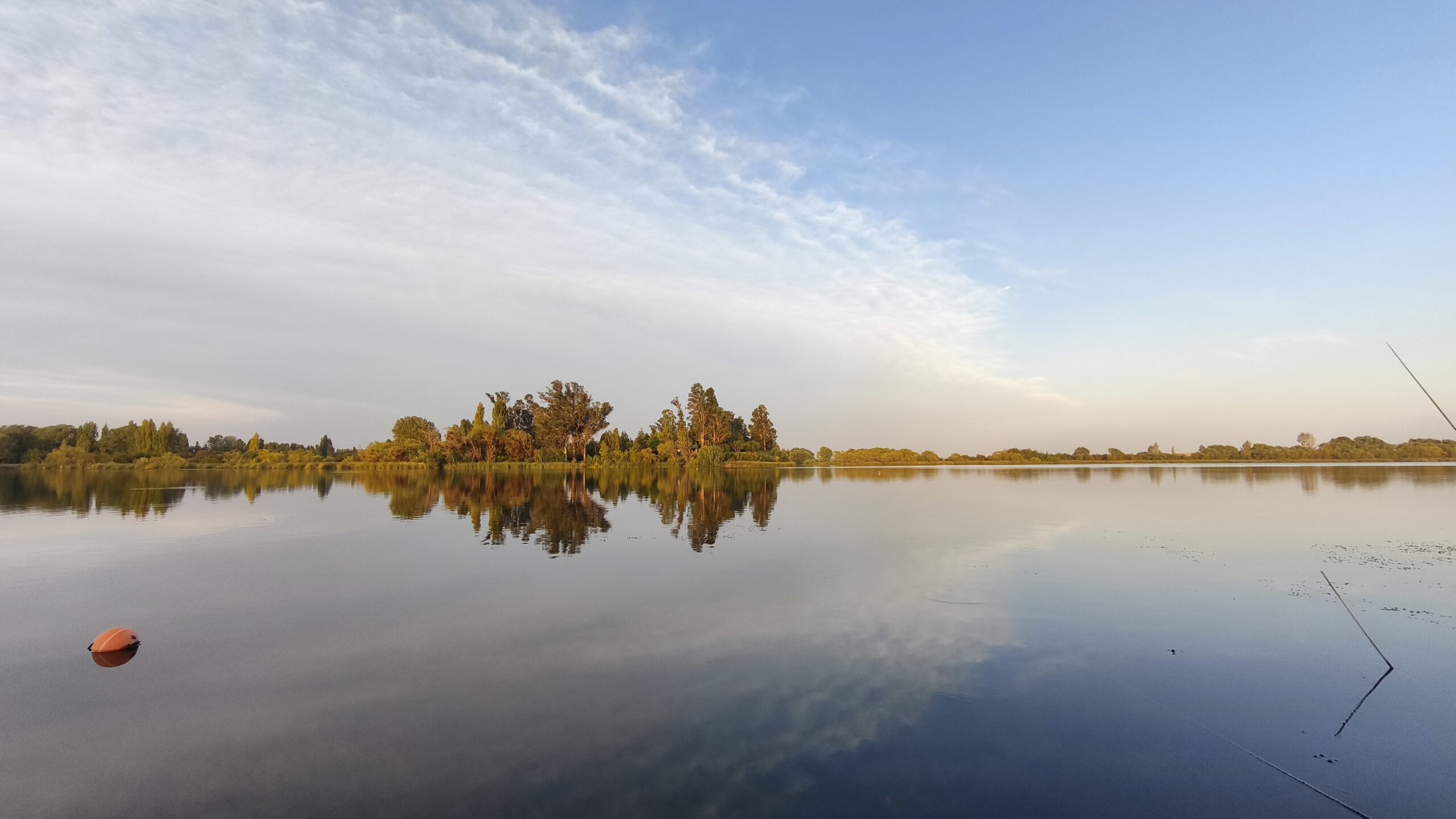On the second day of the Chilean fall, I begin my tour of the “7 lagos. Wilson, the Glosoli camper, must be driven toward Santiago. I drive north from Puerto Varas – in the head of Patagonia. On the way, I want to pass all seven lakes. A nice adventure in the Chilean Indian summer.
I start in Puerto Varas, a nice town on South America’s third-largest lake, Lago Llanquille. The town is very different from Puerto Montt, which can best be described as “a gray industrial town with the only reason to come there being an airport. Puerto Varas is cozy, has all the amenities and also boasts Museum Pablo Fierro, a cabinet of curiosities built and expanded over a lifetime. Definitely visit.
What you can skip is Ensenada. It is the first place I pass as I drive around the huge lake on the south side. Once again the power is out and everything is closed. Ensenothing. Fast forward.
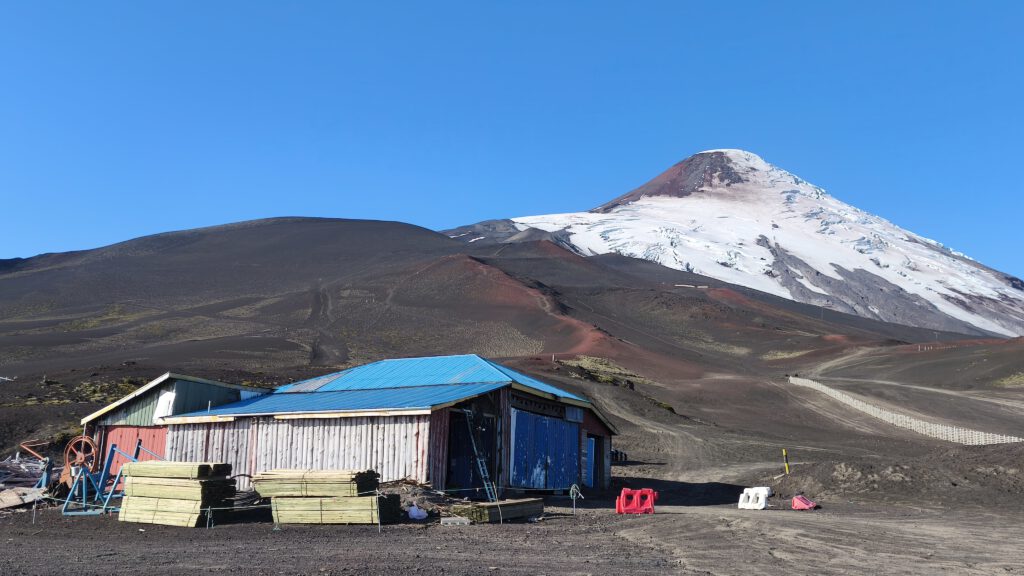
Just outside the municipal limits, I drive into the Vicente Pérez Rosales National Park. On the right, volcano Osorno looms out of the fog, with lago Todos los Santos behind it. I drive north. If you like driving, this is the place to be. What wonderful winding roads along beautiful vistas. I stop at lago Rupanco to fish in a river emerging from the lake. The waves are ferocious and unfortunately I catch nothing in the swirling water. I continue to lago Puyehue and turn right at the town of Entre Lagos (“between lakes”) towards the border with Argentina. Just before the border I turn off to Puyehue National Park. For a small fee I can choose from three senderos (hiking trails), all three of which I walk. I spend the afternoon wandering in ancient forests, enjoying the river on a huge boulder that appears to be made of polished metal and admiring the waterfalls. Despite the fact that it has been a long hot summer, there is still a lot of water flowing through the rivers, falling down with thunderous roar in several places. The first snow fell two weeks ago and then melted again, so plenty of water. It is a beautiful sunny autumn day. Although it cools down considerably at night, it is still sunscreen during the day.
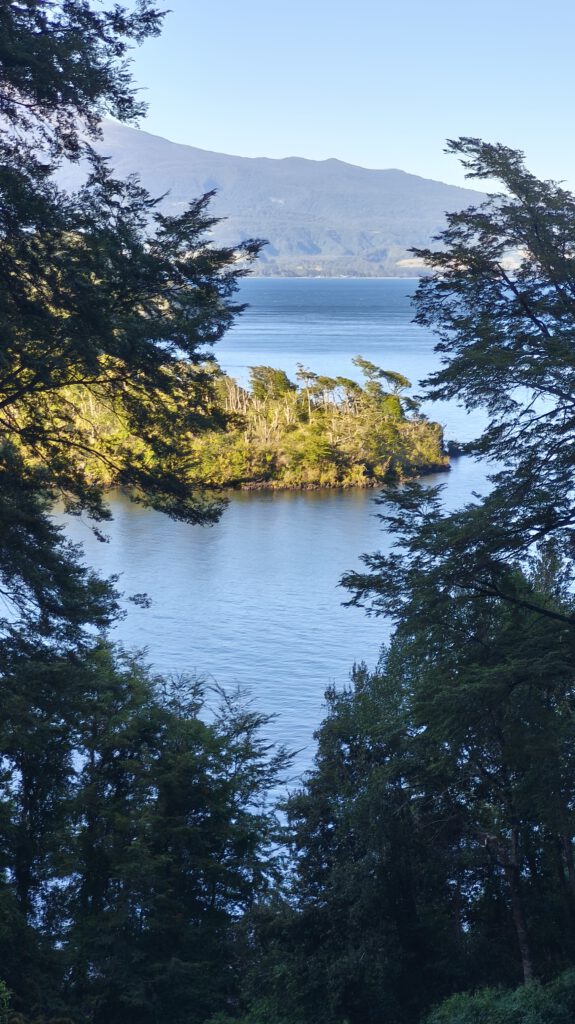
Unfortunately, the canopy tour – a climbing route through treetops – is cancelled due to high winds. Or is it because I am the only entrant? Anyway, I leave the beautiful park and head for Lago Ranco. And that’s a nice drive.
But on the way I pass billboards for the Thermes of Puyehue, where a huge complex is rigged around the two natural hot springs. I take the exit, buy a ticket, put on my swimming trunks and nestle among the bathers. Unlike the Japanese ounces, where nudity and silence are the norm, for the Chileans the bath is primarily a meeting place. A warm pool. I immerse myself in the warm water and in the pleasant conversations between groups of friends and families of four generations. After a soothing cold shower, I put on my dry clothes and head for a campsite. On the way, I ran into a traffic jam. 50 cows and a farmer slowly trudge across the middle of the road. It gives me a chance to put on some music. I drive on singing and find a campsite by the lake, where the wind is pushing the water up into surfable waves. I cook my pot, do some digital stuff and enjoy.
Up early. I set off for lago Ranco. After a cup of strong coffee, I start the motorhome. I drive on back roads towards the next lake. A beautiful fog hangs over the forests. Occasionally I pass a pasture with herds of red- and black-headed dairy cows, always with a farm hanging on from poverty. Life in the interior of Chile is hard. There is a car cadaver at every corrugated iron house, used only for parts. And every house rents out one or more cabañas, invariably announced with a hand-painted board. There are now more cabañas in Chile than there will ever be tourists. Along the road a swarm of bandurias puffs up; I can hear their screeching with the windows closed.
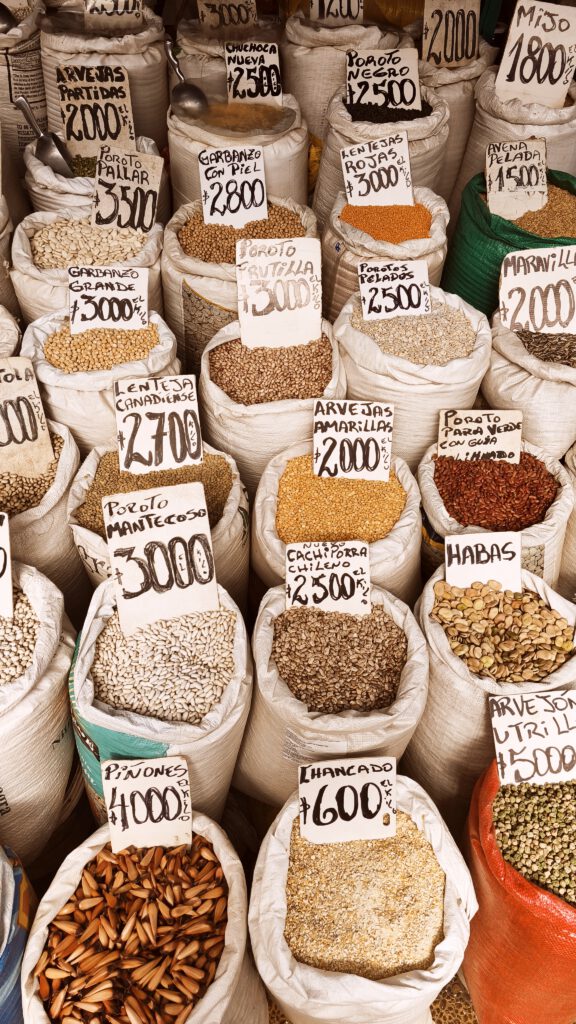
After about twenty kilometers I drive into a police trap. ‘I’m from the Netherlands and can only speak a little Spanish,’ I tell the officer in extra flawed Spanish. It works. He decides this is going to be too difficult and I get to ride on. I pass several hamlets, all with a wooden church, several “mini markets” and a snack bar for which there is already a line in the early morning. Then suddenly the lake looms up, bathed in sunlight, the wooded islands like currants. I drive on to Communa de Lago Ranco to refuel and do some shopping at a local market. After I make coffee, the journey continues northward. By now it is nice and warm outside.
The route along the lake is beautiful. Alternately, I drive along the shore through the woods or through the fields. The winding road with its bright yellow lines and light green fence is like a game of Mario Bros. It is a driver’s delight. I decide to take a small stretch of highway (the famous routa 5) and get off at Los Lagos. Then I can admire the amazing Rio San Pedro, a beautiful turquoise river that flows most beautifully at Mirador Malihue. I take a few splashes in the crystal-clear water – the current is strong and I have to be careful how far I let myself drift. I talk to a group of (former) colleagues from Santiago who lost their jobs at the same time and are now traveling together. They worked in IT but have “only” 5-10 years of experience which is too little for a country where everyone seems overqualified for the work they do.
And then I drive on toward the next lake: Riñihue. A small one, but beautifully embedded among the mountains. Meanwhile, the landscape is constantly changing. I see the first fish farms, but also huge cornfields, car yards and vast forests. I take the turnoff to the Routa T 415 toward the lake. The road is bad and the lake appears to be visible only from one point. It gets its water mostly from the adjacent larger lake that is my next destination. I drive on to this lake and the place of the same name: Panguipulli! It is a fairly large town. In the distance is (stands?) volcano Pucon, a sleeping giant that does cause some headaches for the residents of the nearby city of Pucon. I hang out at the little harbor and buy fresh Ceviche of salmon.
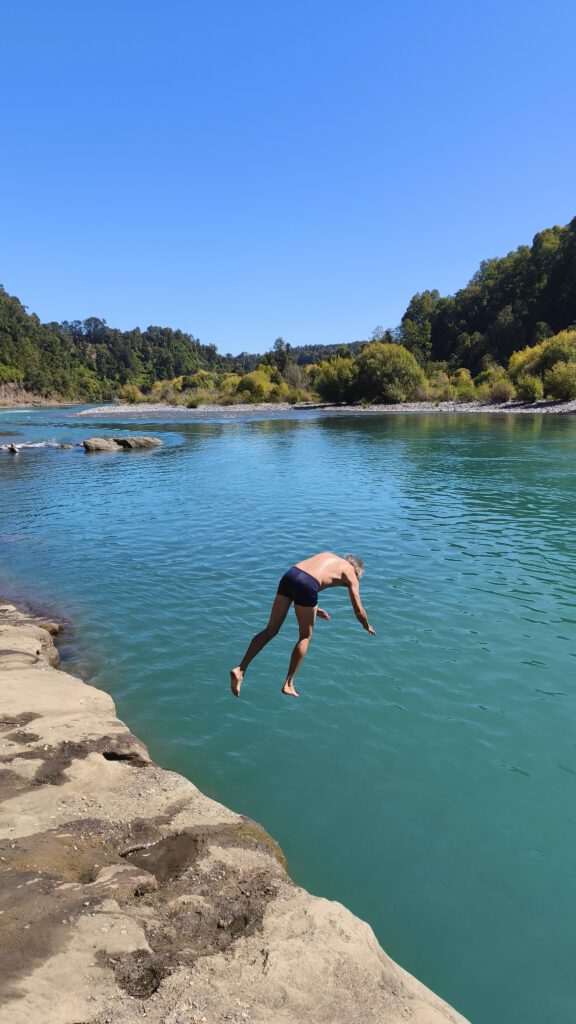
On this part of the Circuito siete lagos, there are an incredible number of campsites. After thirty, I stop counting. It gets more mountainous, more rugged. Beautiful! I have arrived at the second last lake: Lago Calafquên. I stop in the town of Lican Ray. It is sunny and warm and I put my Lican Ray Ban on 🙂. It turns out to be a nice little town. There are tourists (who all want their picture taken with the outvergote place name on the beach), sunbathers bathing, happy music everywhere, the terraces are full and I find a coffee shop with real coffee.
Then on to the last of the seven lakes. Leaving the village I see a beautiful old volkswagen type2 camper. Let’s have a chat. It is a family from Argentina, the three of them have been traveling in this small camper for 2.5 years. Respect. Especially since they also have two dogs with them! You often come across them, people who have “got out of the system” and earn their living with some online work or making jewelry and souvenirs for local markets.
I pass through Villarica. It in itself has a nice old town, but otherwise it is mostly industry. The high schools have just finished and everywhere are young people walking beside and on the road. Life-threatening. Many students and road workers die in Chile. Everywhere there are little concrete temples commemorating a loved one. There are even stores that specialize in such monuments. For me, each little temple is mainly a reminder to pay attention in traffic.
I drive on quickly because I want to be in Pucon before dark. The route along the lake is touristy. And fancy. It is the richer part of Chile, a kind of Chilean Riviera, and a popular place for a second home. I drive on to the center, find a coffee shop, and from there, look for a campsite on the lake. Tonight dinner in town and then tomorrow to volcano Villarico and then north to its sister Llaima.
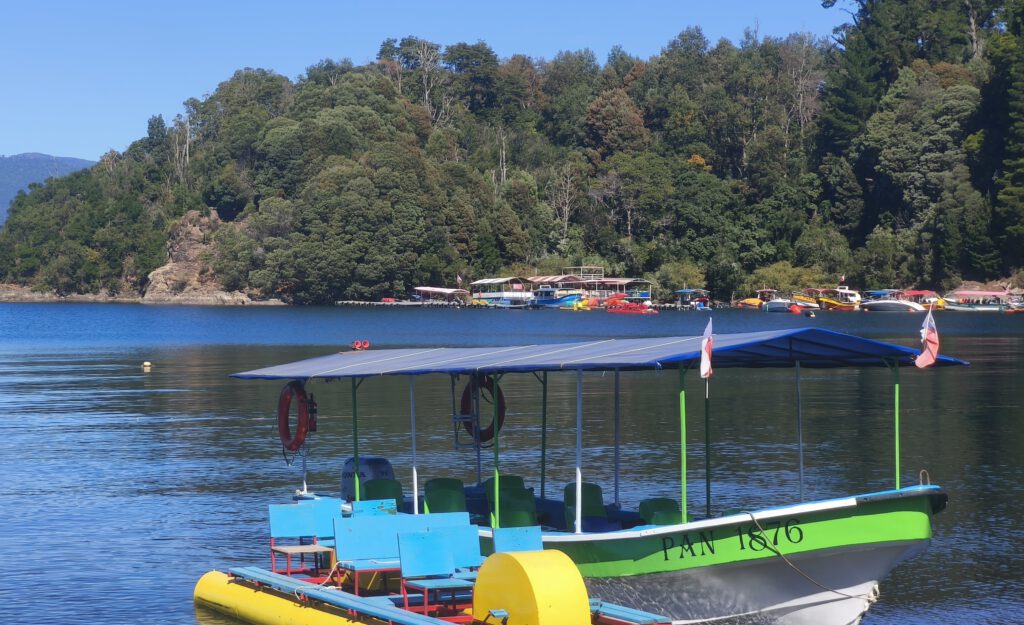
The first campsite turns out to be closed but I find a second one, a wooded spot by the lake. Time for a beer. My 7 lakes trip is over. I enjoy myself in the evening sun. What wonderful weather. Honestly, this is my favorite temperature, around 25 degrees and with a clear blue sky.
With global warming, many popular travel destinations in Europe and the U.S. have become too hot in the summer. Or too wet. And winter sports areas have either too little or too much snow due to climate imbalances. Then a trip through Chile in the spring or fall is a nice alternative. And it is picking time for many fruits and vegetables, such as plums and grapes, which you can buy for next to nothing. I myself look back on a wonderful trip along 7 special lakes and all the beauty in between. And all that with a lovely sunshine. Traveling in Chile in the fall is not that crazy.
Enjoy your Chile trip!
Gerjon
Ps: Below are some more photos from my fall trip.
